AWS Certified AI Practitioner
Applications of Foundation Models
Vector Databases on AWS
Welcome students! In this lesson, we explore various options for managing vector embeddings and vector databases on AWS. Vector embeddings are numerical representations of data—such as text and images—that capture semantic relationships, enabling efficient retrieval in generative AI, machine learning, and search applications. AWS offers a range of managed services to store and work with these embeddings.
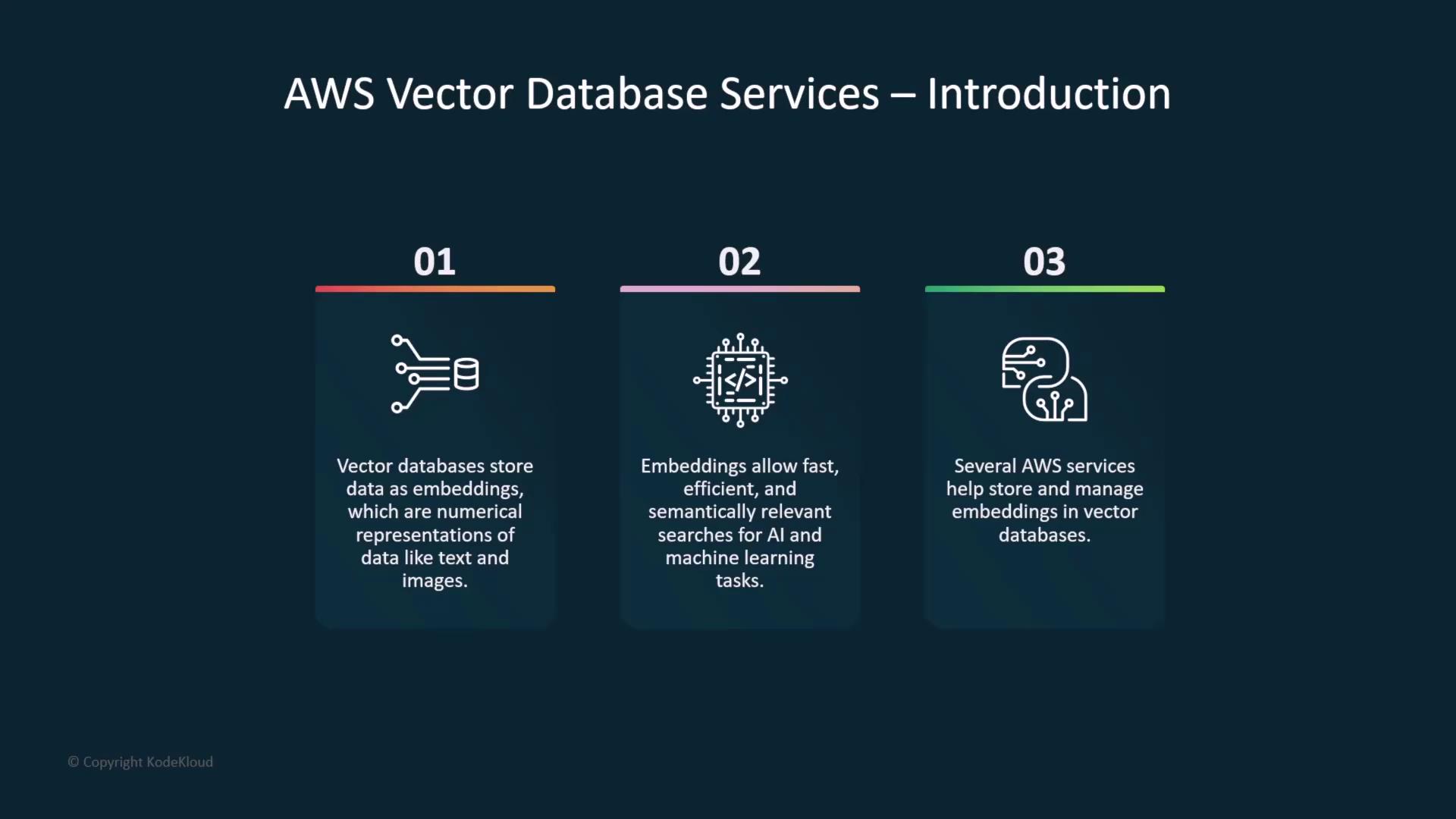
Amazon OpenSearch
Amazon OpenSearch, built on the legacy Elasticsearch platform, is a widely known service for vector databases. It delivers high-performance vector similarity searches, ideal for uncovering related concepts. The serverless version auto-scales to accommodate large generative AI models while also powering interactive log analytics, real-time website searches, and application monitoring.
Key features of OpenSearch include its k-Nearest Neighbor (k-NN) search, which quickly identifies semantically related vectors. OpenSearch integrates seamlessly with AWS Bedrock and SageMaker, ensuring real-time data ingestion and indexing for dynamic applications.
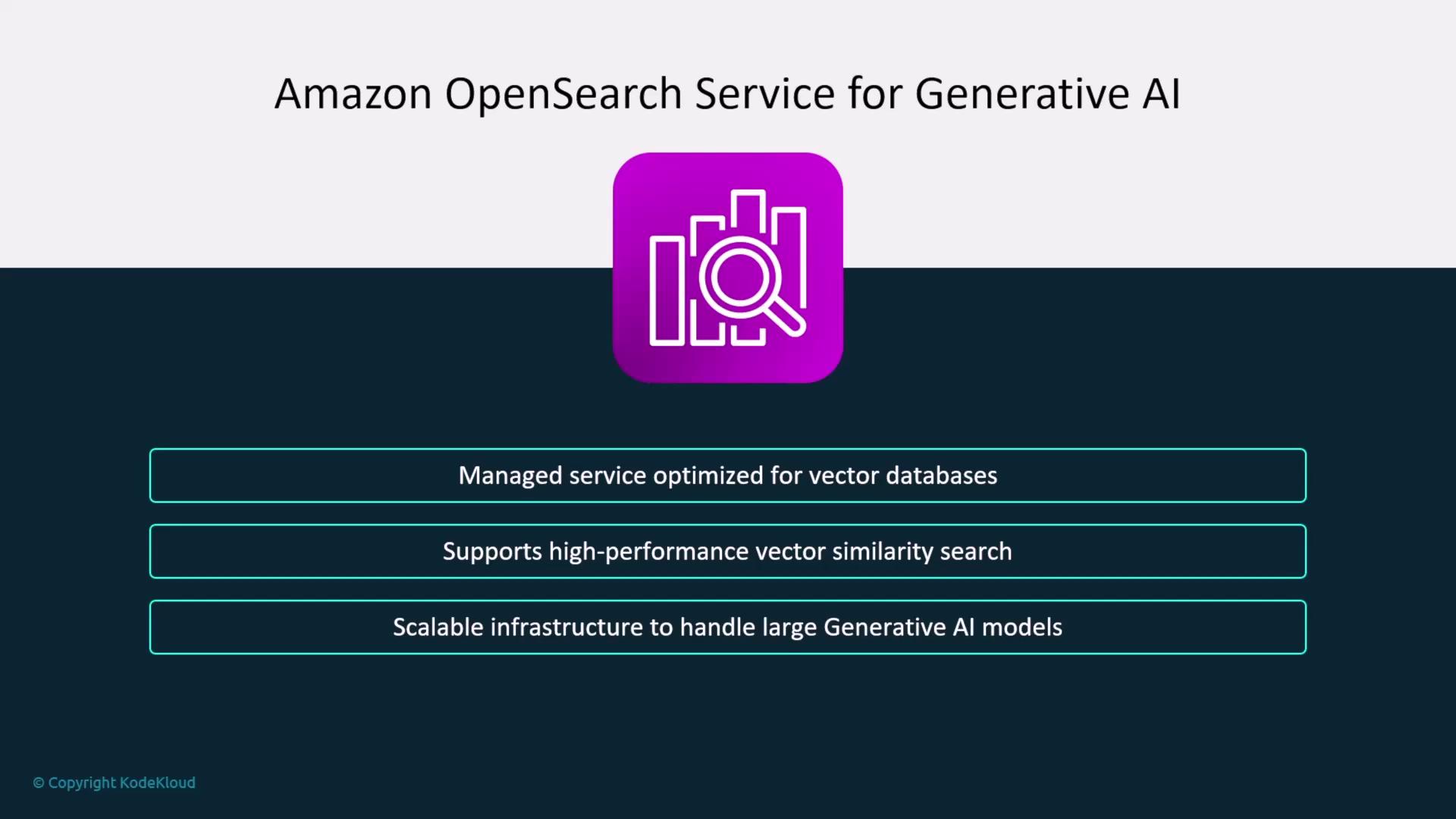
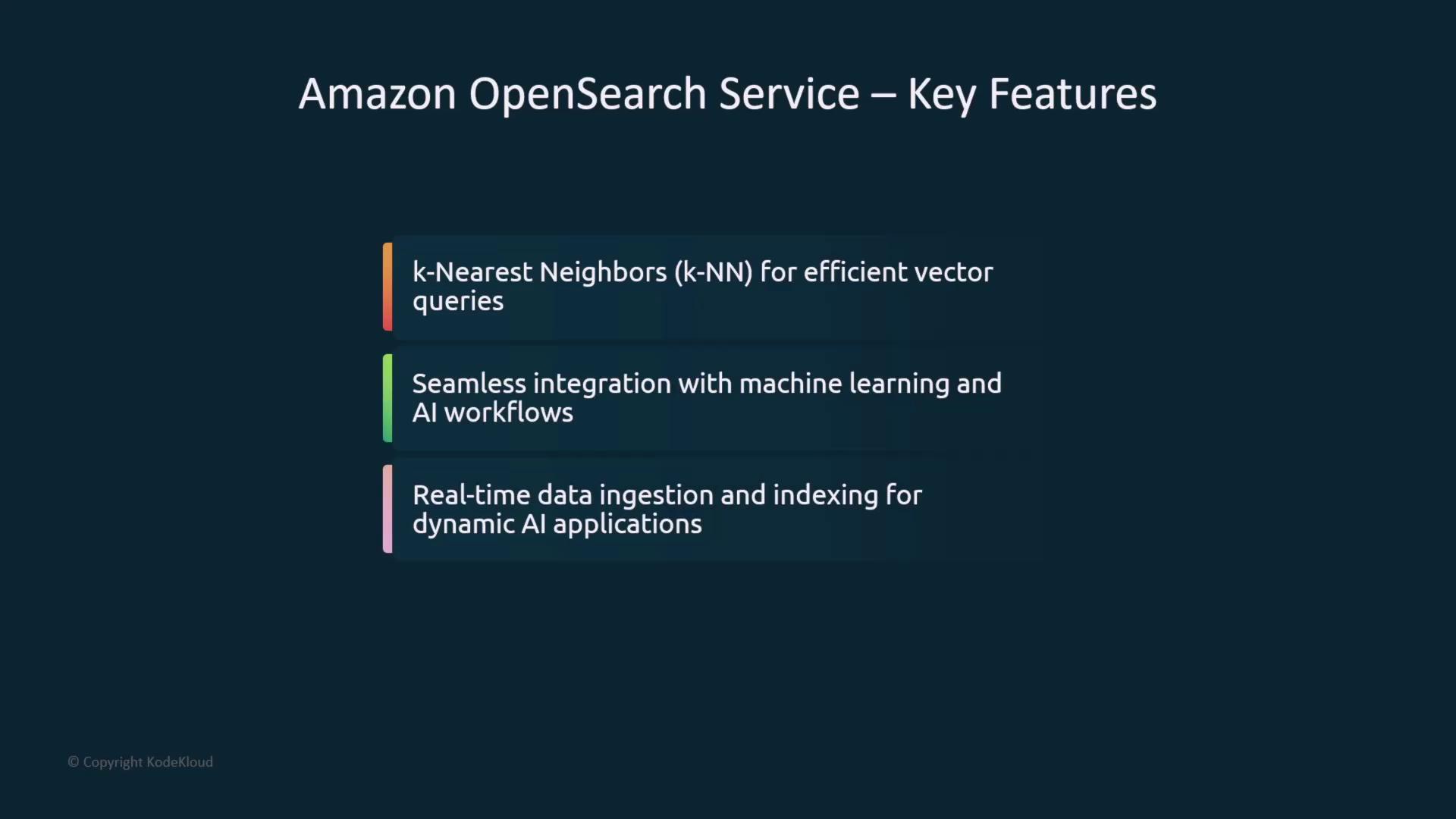
Use Cases for OpenSearch
OpenSearch is well-suited for:
- Recommendation engines leveraging continuous vector-based insights.
- Semantic search for real-time text and image processing.
- Enhanced conversational AI via rapid contextual retrieval.
- Log analytics for real-time application monitoring and website search.
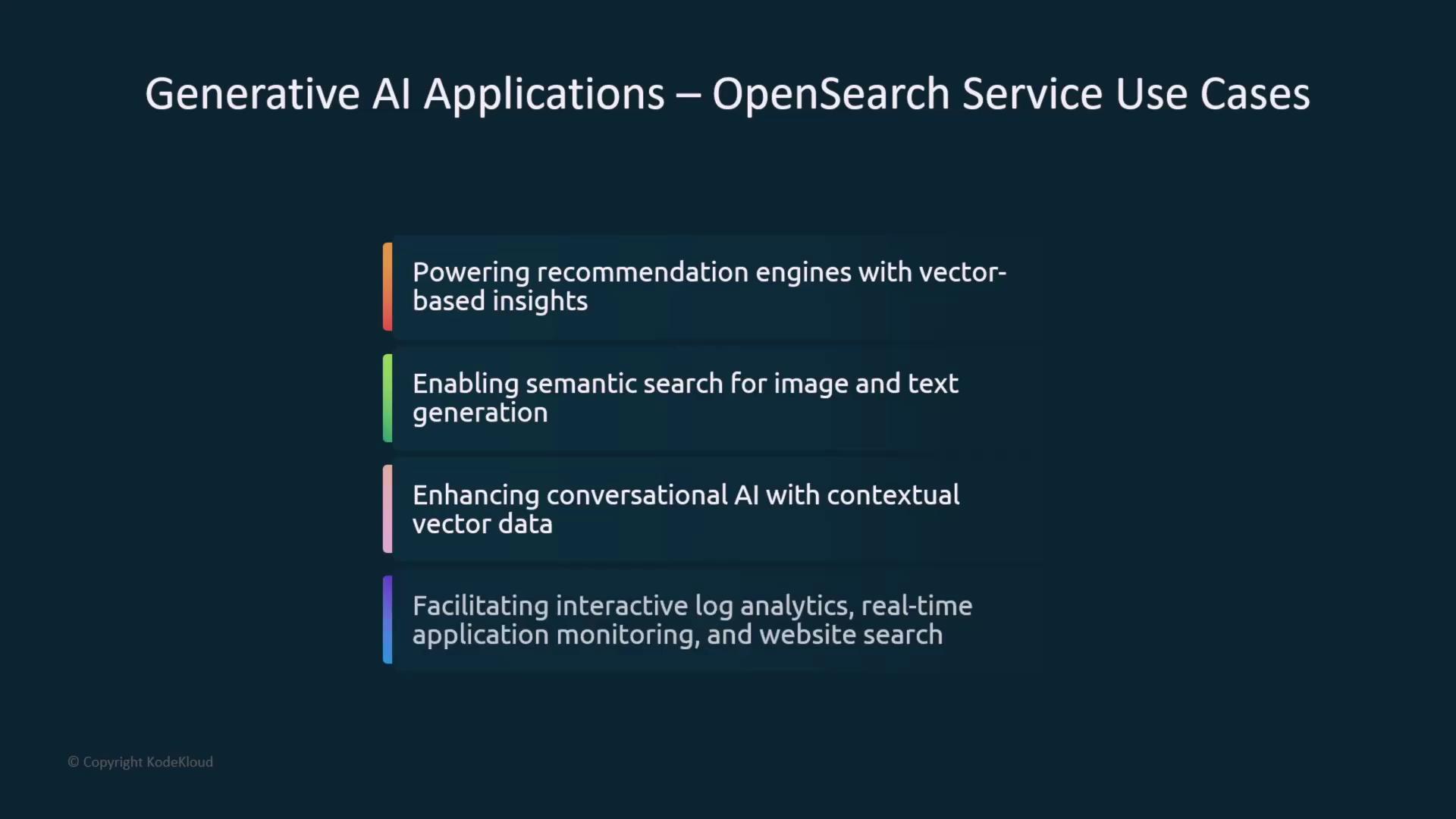
Semantic search, powered by language encoding, improves search relevance by linking meaningful relationships between data elements. Its quick retrieval capabilities and scalability make it an excellent choice for performance-driven and accurate applications.
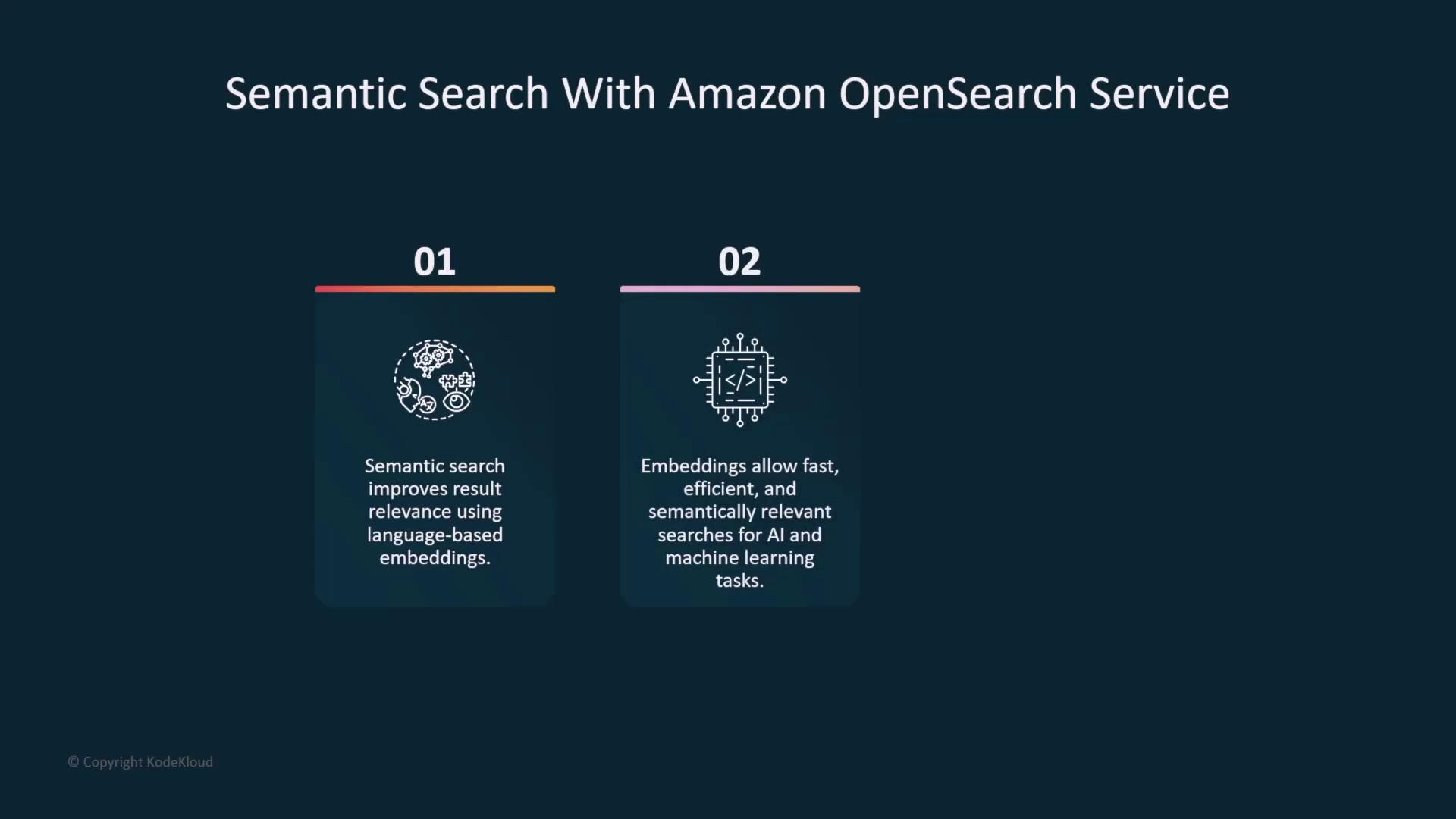
Amazon Aurora with PgVector Extension
Another powerful option is Amazon Aurora’s PostgreSQL-Compatible Edition with the PgVector extension. PgVector enables the integration of vector embeddings generated by machine learning models directly into the database. This integration facilitates the storage and semantic indexing of data derived from large language models, making it ideal for recommendation systems and catalog searches.
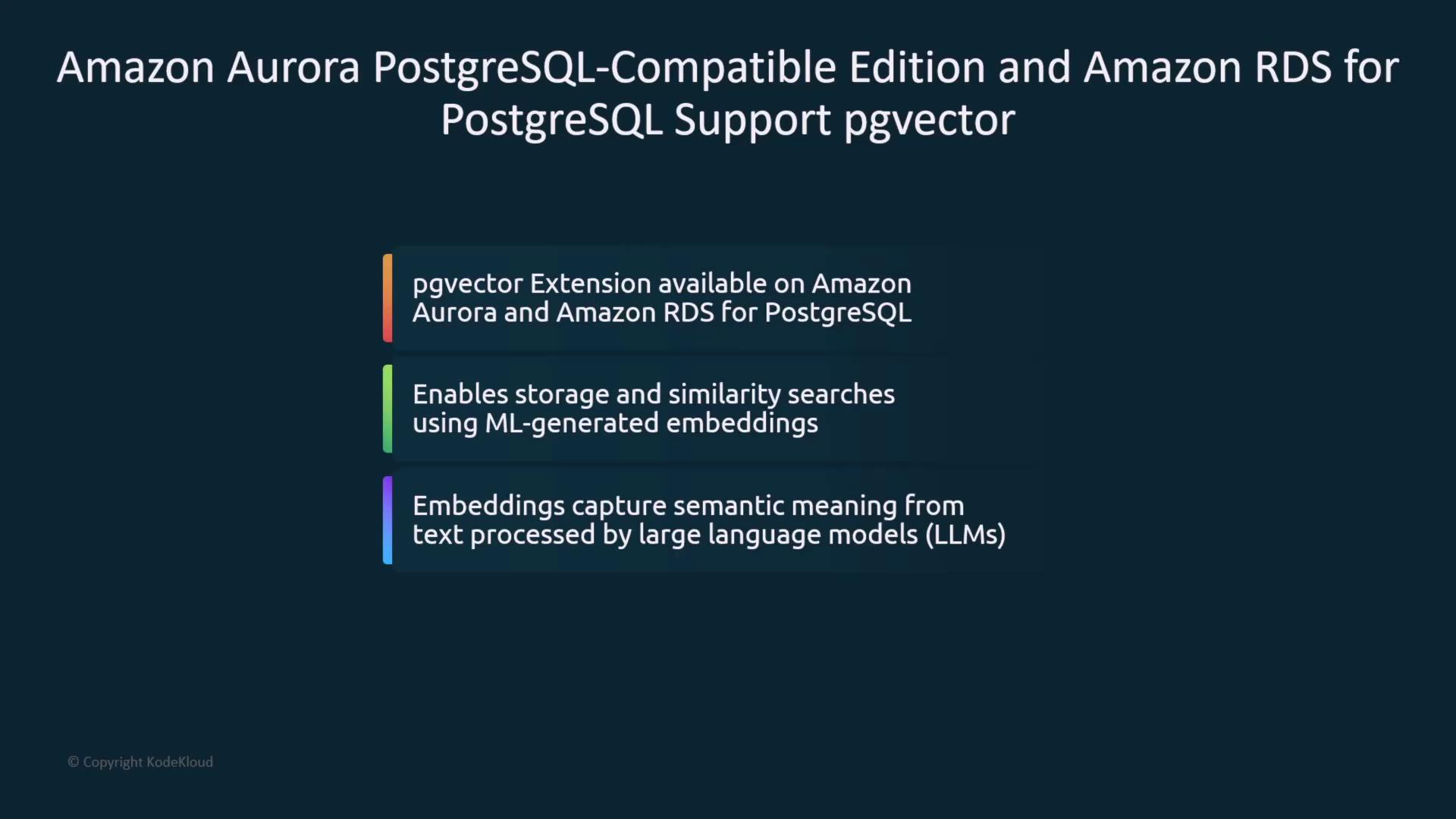
Amazon Neptune ML
Amazon Neptune ML combines traditional graph database capabilities with advanced machine learning features. By leveraging graph neural networks (GNNs), Neptune ML enhances predictive models by analyzing complex inter-data relationships. Integrated with the Deep Graph Library (DGL), this service simplifies model selection and training—ideal for use cases where relationships between data points are critical.
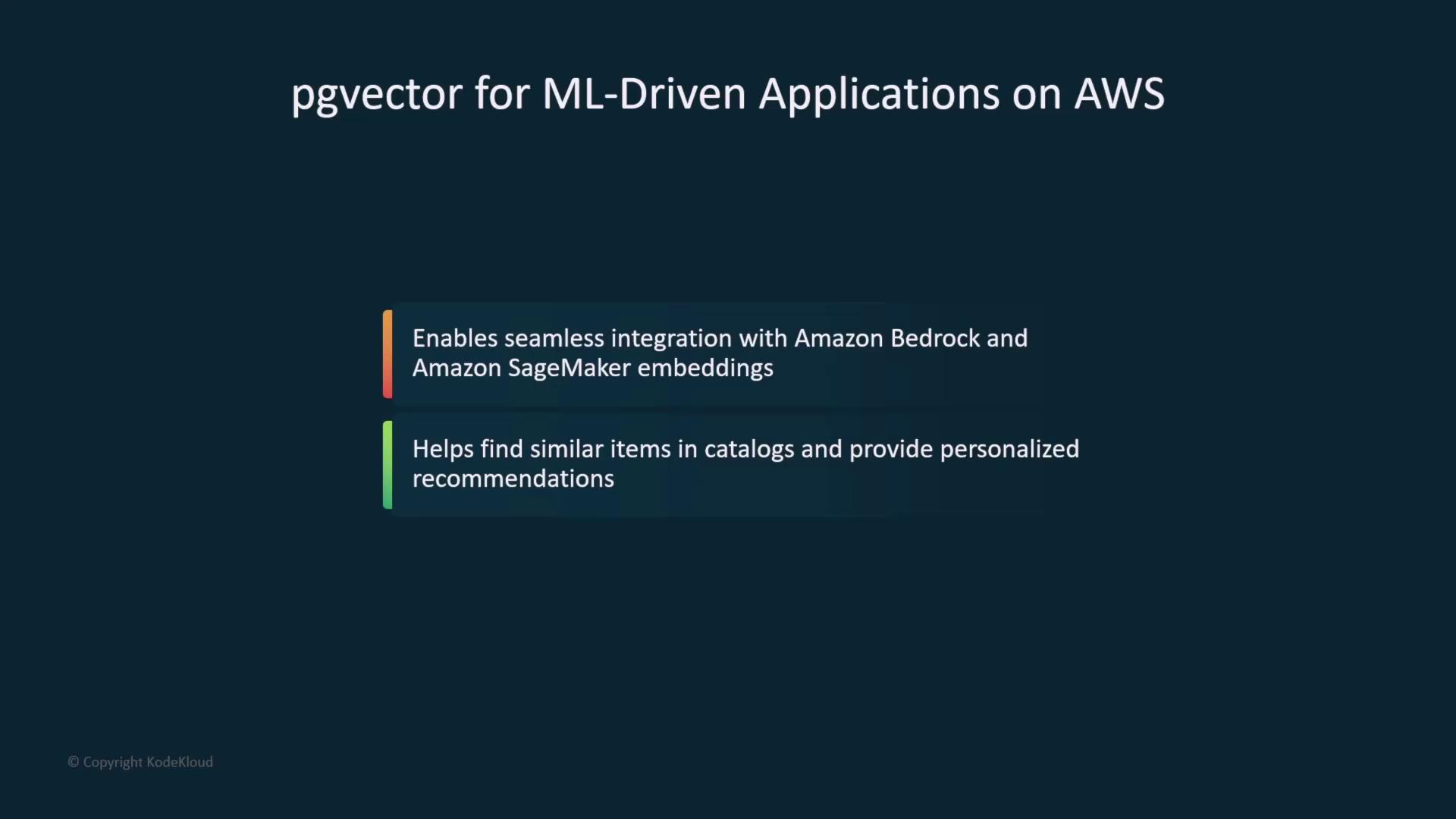
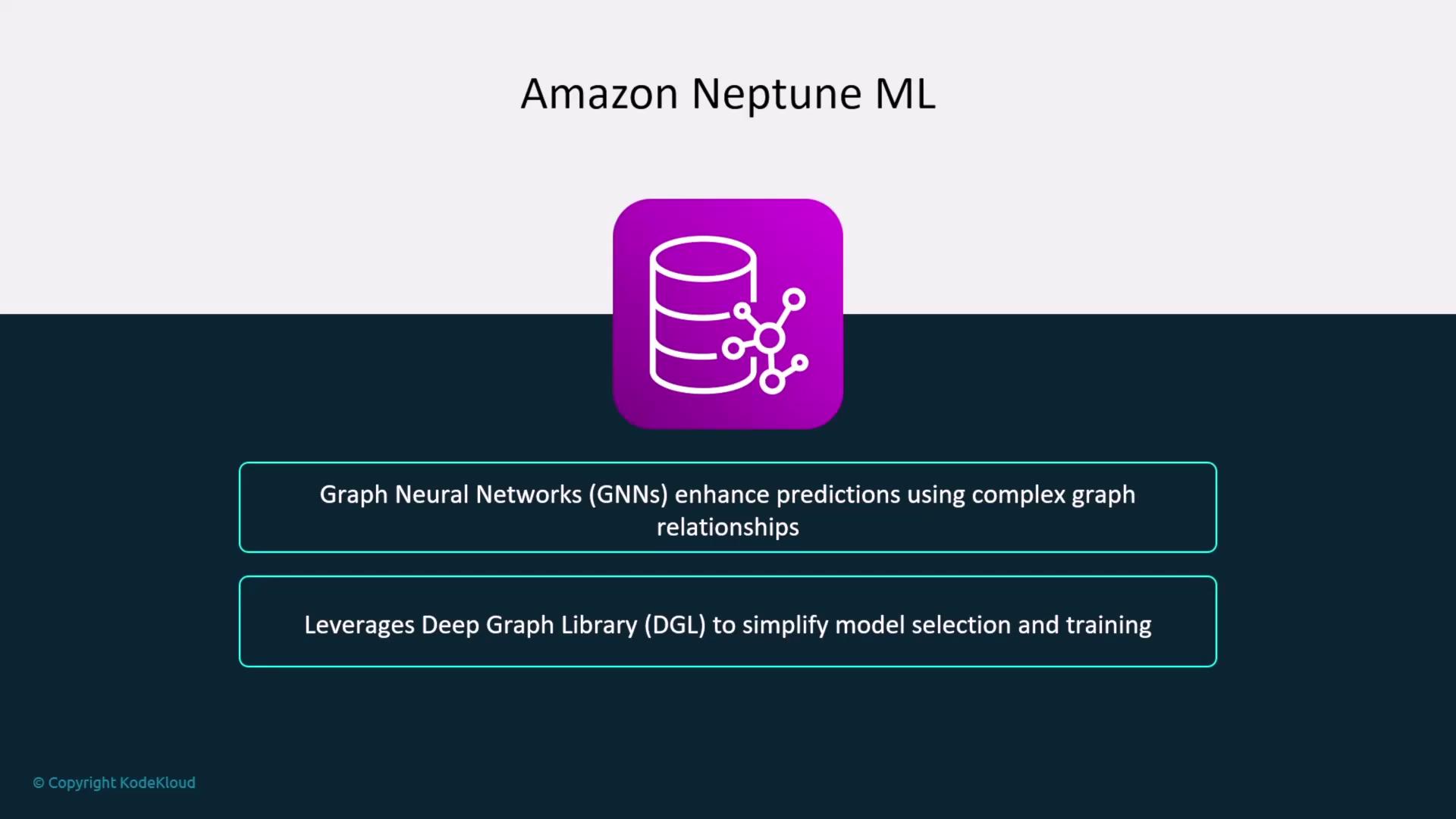
Amazon MemoryDB
Amazon MemoryDB, an in-memory database service, offers robust vector search capabilities. With support for purpose-built engines like Valkyrie or Redis, MemoryDB delivers high-throughput vector searches with latencies in the single-digit milliseconds. It handles millions of vectors and high query volumes, ensuring high recall accuracy and reliability through multi-AZ configurations. This makes MemoryDB suitable as both a caching layer and a primary database with built-in backup support.
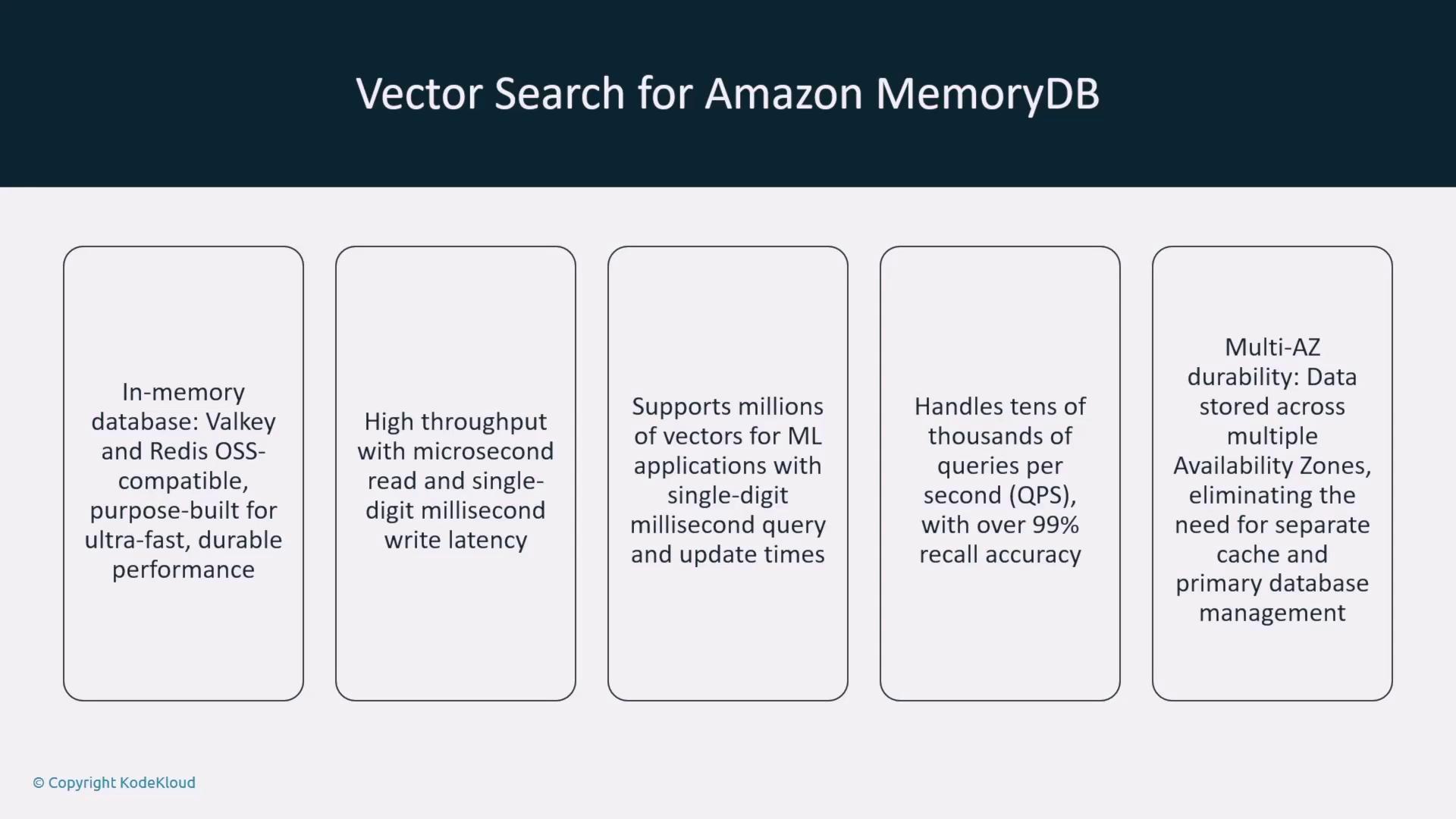
Amazon DocumentDB
Amazon DocumentDB, compatible with MongoDB, provides similar vector search capabilities. This document database allows for efficient storing, indexing, and searching of vector embeddings. It integrates easily with major generative AI and machine learning services and supports custom model deployments. In addition, DocumentDB facilitates log analytics, application monitoring, and website search.
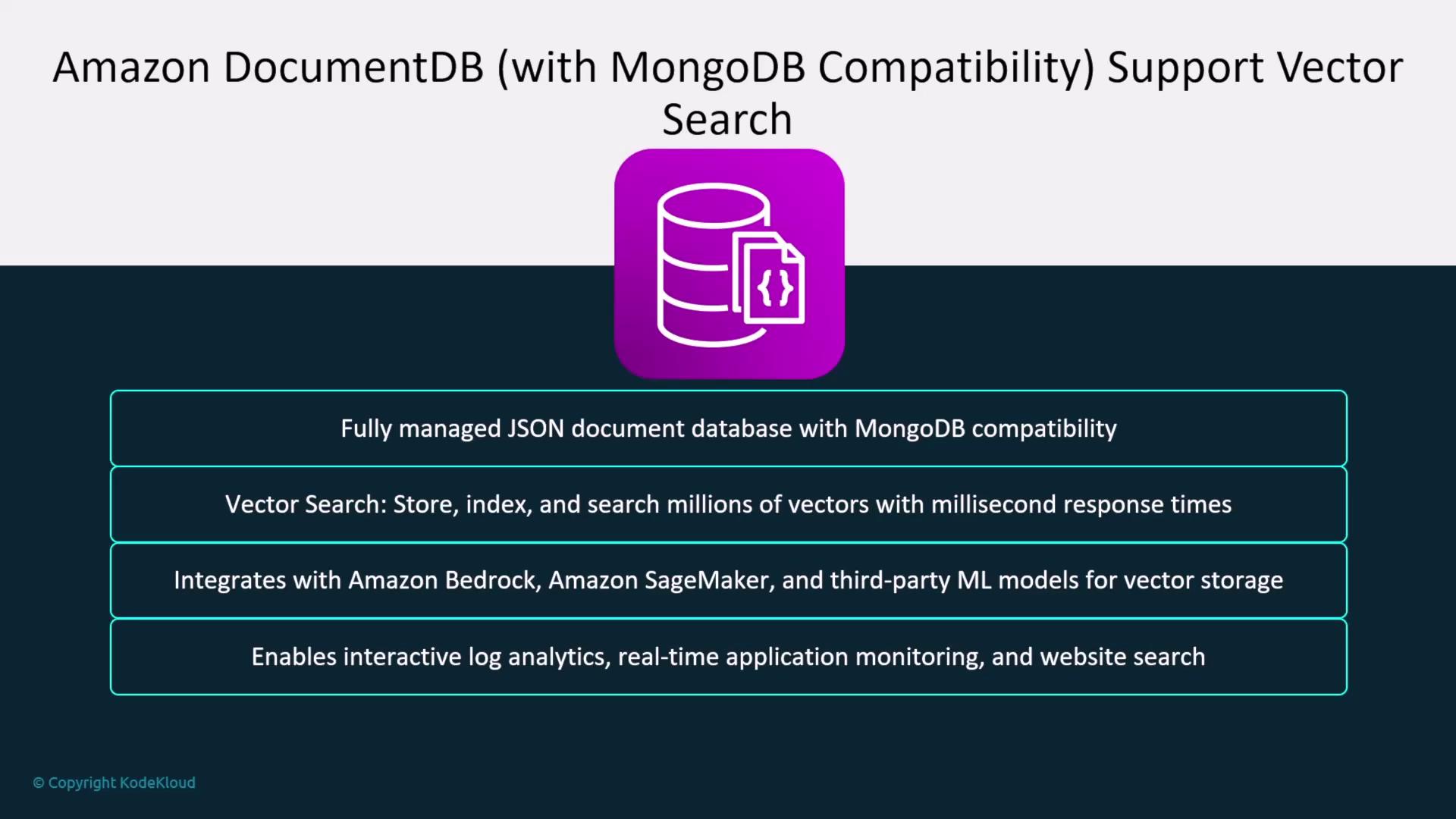
Retrieval-Augmented Generation with AWS Bedrock
AWS Bedrock supports the creation of custom knowledge bases using Retrieval-Augmented Generation (RAG). RAG dynamically retrieves up-to-date and domain-specific information to augment a generative AI model’s knowledge base. This feature is especially beneficial for fine-tuning models in specialized domains—an essential concept for your exam preparation.
Note
Be sure to familiarize yourself with the integration capabilities between these services and AWS Bedrock as they are crucial for building scalable, intelligent applications.
Summary
The vector database services on AWS include:
- Amazon OpenSearch
- Amazon Aurora with PgVector for PostgreSQL
- Amazon Neptune ML
- Amazon MemoryDB
- Amazon DocumentDB
Each of these services supports vector embeddings, powering a wide range of generative AI and machine learning applications. Master these concepts to enhance your cloud-based data management skills and excel in your exam.
We will catch you in the next lesson.
Watch Video
Watch video content